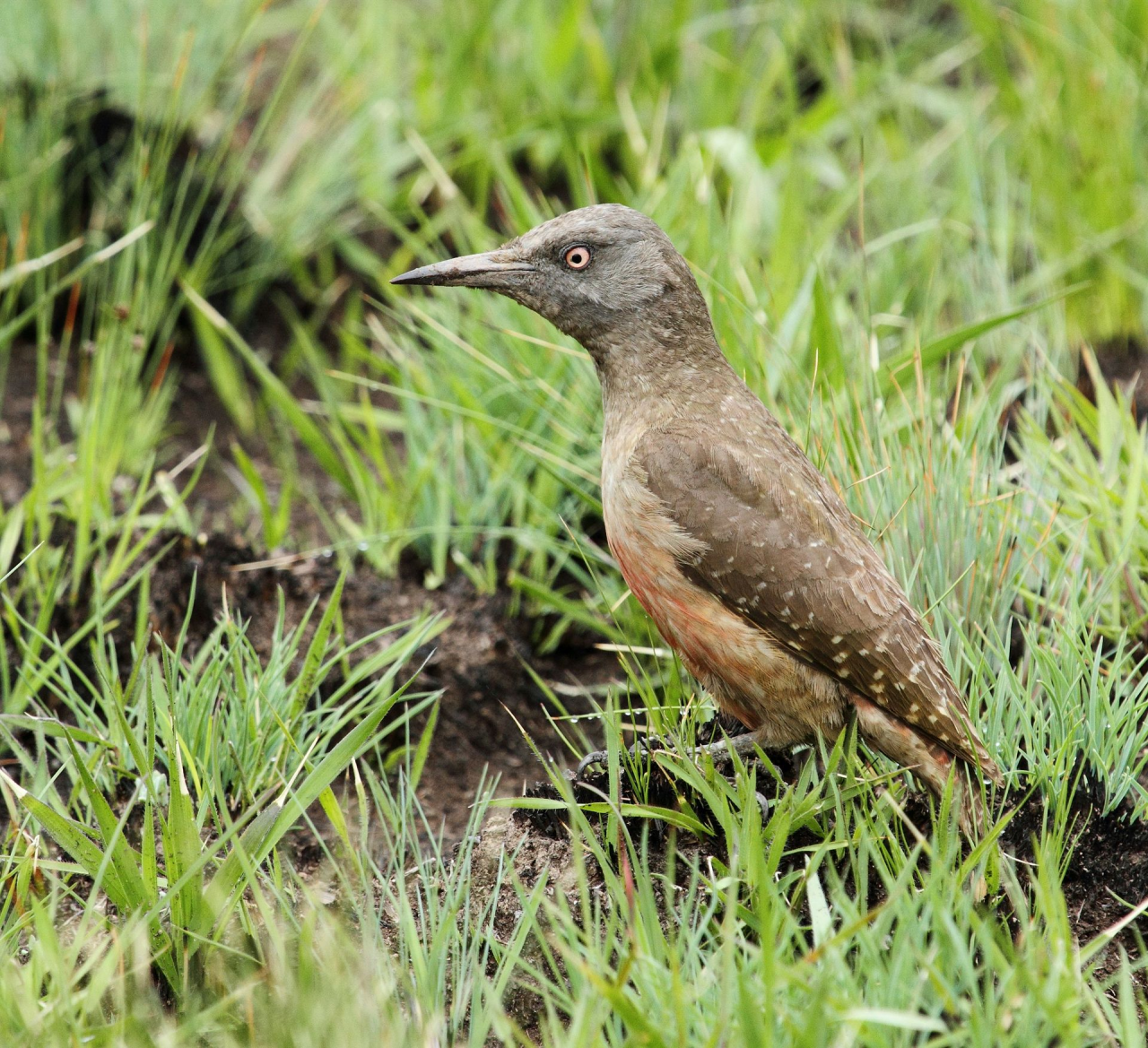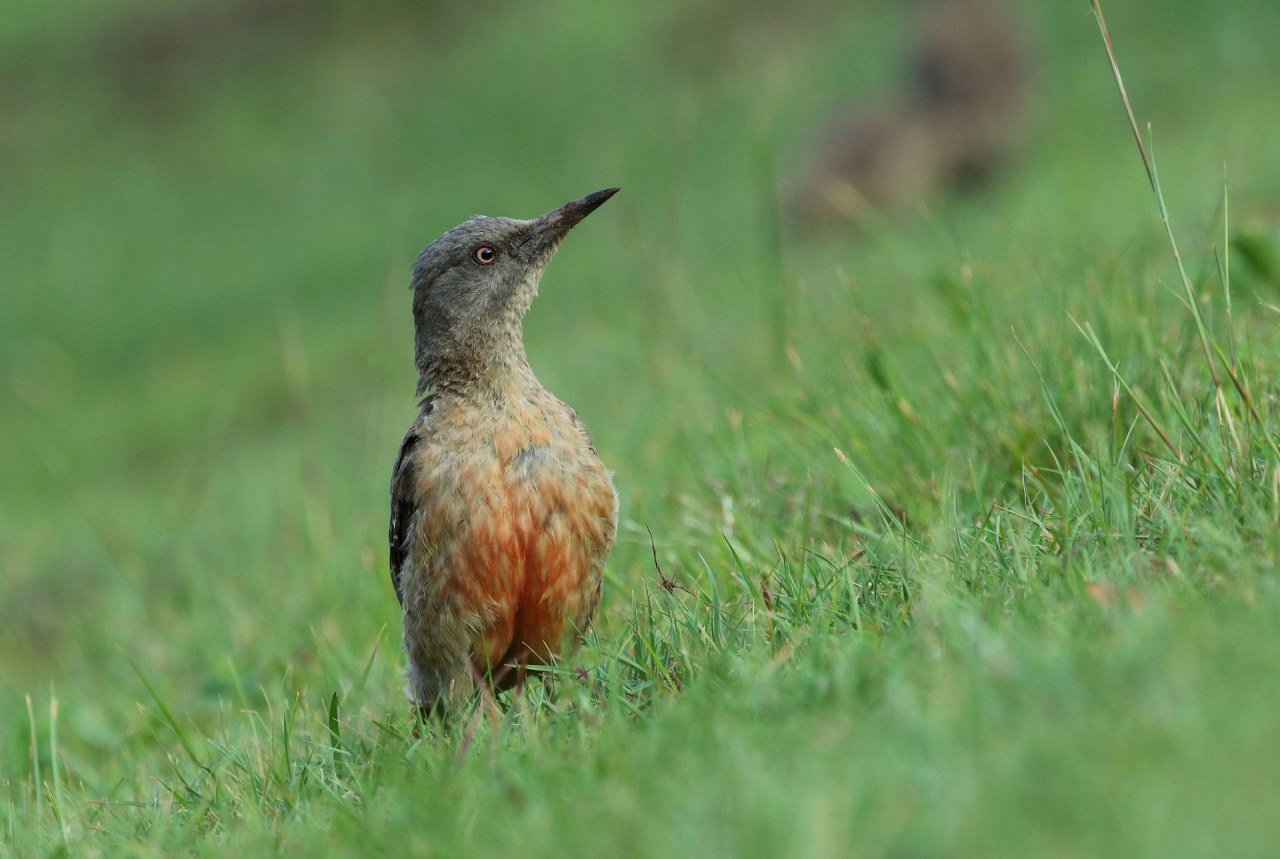
By Alandmanson, CC BY-SA 4.0
Etymology: Flickerer
First Described By: Swainson, 1832
Classification: Dinosauromorpha, Dinosauriformes, Dracohors, Dinosauria, Saurischia, Eusaurischia, Theropoda, Neotheropoda, Averostra, Tetanurae, Orionides, Avetheropoda, Coelurosauria, Tyrannoraptora, Maniraptoromorpha, Maniraptoriformes, Maniraptora, Pennaraptora, Paraves, Eumaniraptora, Averaptora, Avialae, Euavialae, Avebrevicauda, Pygostaylia, Ornithothoraces, Euornithes, Ornithuromorpha, Ornithurae, Neornithes, Neognathae, Neoaves, Inopinaves, Telluraves, Afroaves, Coraciimorphae, Cavitaves, Eucavitaves, Picocoraciae, Picodynastornithes, Piciformes, Picides, Picidae, Malarpicini
Status: Extant, Near Threatened
Time and Place: Within the last 10,000 years, in the Holocene of the Quaternary


The Ground Woodpecker is known from southernmost portion of Africa

Physical Description: The Ground Woodpecker is a medium-sized bird, about 22 to 30 centimeters in length. The males and females are mostly similar in appearance, except for the fact that the males have browner necks than the females, which are more grey in color. Their bodies are brown on the back, with white sprites across the wings and tail; their breasts, stomachs, and rumps are beige and red striped. They have long, pointy grey beaks, and grey feet with smaller claws. The females also aren’t as red in color as the males. Juveniles are like the adults, but slightly duller overall.
Diet: Ground Woodpeckers are specialized feeders of ants, ant broods, termites, beetles, and mites. They do eat other arthropods, but mainly by accident.

By Alandmason, CC BY-SA 4.0
Behavior: The Ground Woodpecker will feed in pairs or small groups, in a very large territory; they stratigically attack ant nests, spending three days in any particular place (they do not migrate). They’ll perch on large boulders, going down to the ground to attack their food sources. They peck the soil roughly to penetrate it upon discovering food; though they make smaller pecks to inspect for food and sweep away debris with their feet. They feed with their heads down and beak in the ground, using their long tongues to dig out ants. They also will probe wood for wood-dwelling ants. They feed mostly in the morning, especially during the winter. These birds make very loud, harsh “peer pper peer peer” sounds when scared, and they’ll also contact each other with “ree-chick, ree-chick, ree-chick” calls.
When displaying for mates, they make “chew-kee” calls, especially the males which make upright stances with spread wings. The nests are made by single pairs or polyamorous trios, with the male digging a nest in a bank or road cutting – sometimes even among rocks. They nest usually through August to September, though sometimes earlier and sometimes later depending on the location. They lay usually two to five white eggs in a nest, with all parents incubating with some helpers. The parents work together to feed the children, which fledge and then stay with the parents until the next breeding season.

By Alandmason, CC BY-SA 4.0
Ecosystem: The Ground Woodpecker lives in rocky terrain in higher elevations, including boulder-laden slopes and hillsides, as well as open grassland and scrub.
Other: The Ground Woodpecker is considered near threatened – though common in its ranges, it lives in remote habitats and are affected by increased forest growth in the region, though the decreasing rate of its population is going down.
~ By Meig Dickson
Sources under the Cut
Jobling, J. A. 2010. The Helm Dictionary of Scientific Bird Names. Christopher Helm Publishing, A&C Black Publishers Ltd, London.
Winkler, H., Christie, D.A., Kirwan, G.M. & Sharpe, C.J. (2019). Ground Woodpecker (Geocolaptes olivaceus). In: del Hoyo, J., Elliott, A., Sargatal, J., Christie, D.A. & de Juana, E. (eds.). Handbook of the Birds of the World Alive. Lynx Edicions, Barcelona.
